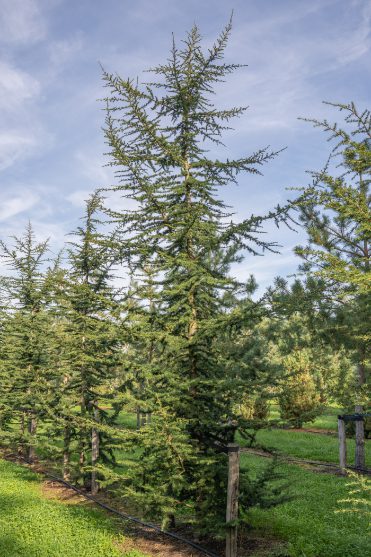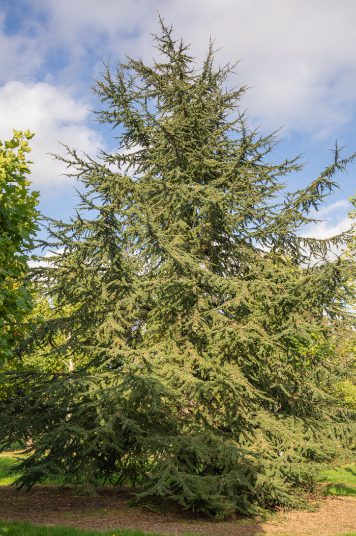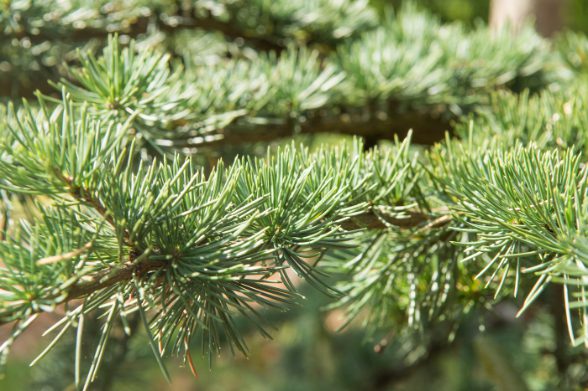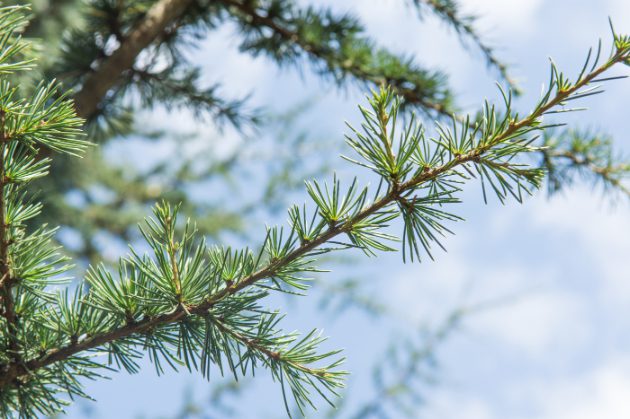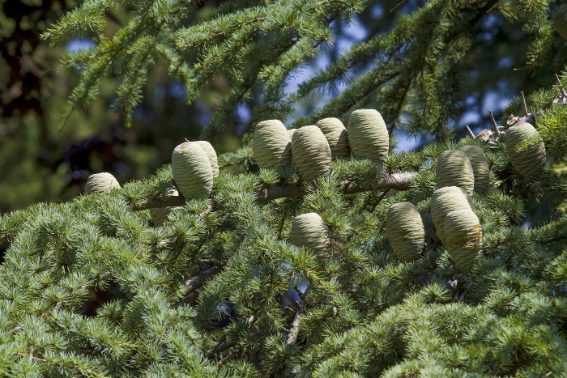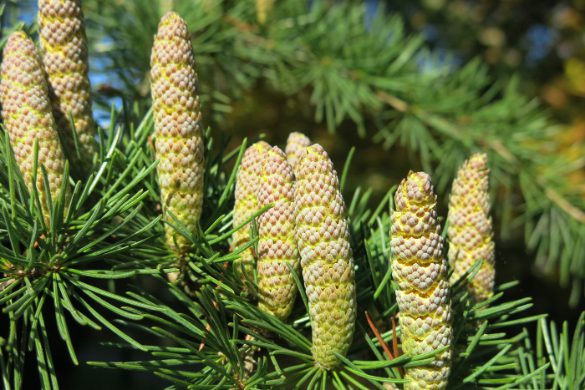Cedrus libani | Cedar of Lebanon
Native to Lebanon, the eastern coast of the Mediterranean and Asia Minor, the Cedrus libani is a majestic, evergreen conifer associated with heritage locations. The Cedrus libani has short, dark grey-green needle-like leaves that grow in bundles of 20-40. An imposing tree that starts life a pyramidal shape, on maturity the branches spread horizontally to create the characteristic flat-topped crown with tiered, open-habit shape. At around 40 years old the Cedrus libani begins to produce large, aromatic barrel-shaped cones with a flattened top and papery feel. They appear in autumn on top of the stems. Male cones are small, erect and greyish-green when young, but lengthen and turn brown when mature. The rounder female cones begin green then turn purple-grey and finally brown on maturity. Up to 18 months after pollination the cones release winged seeds. The Cedrus libani thrives on most free-draining soil and prefers a location with full sun and plenty of space to grow. This popular tree can be found in the grounds of nearly every stately home and mansion in the country, planted from the 1740s onwards. The Cedrus libani is one of finest statement trees available, and it becomes more impressive with age. There are 2000-year-old specimens recorded, with a trunk diameter of several metres.

